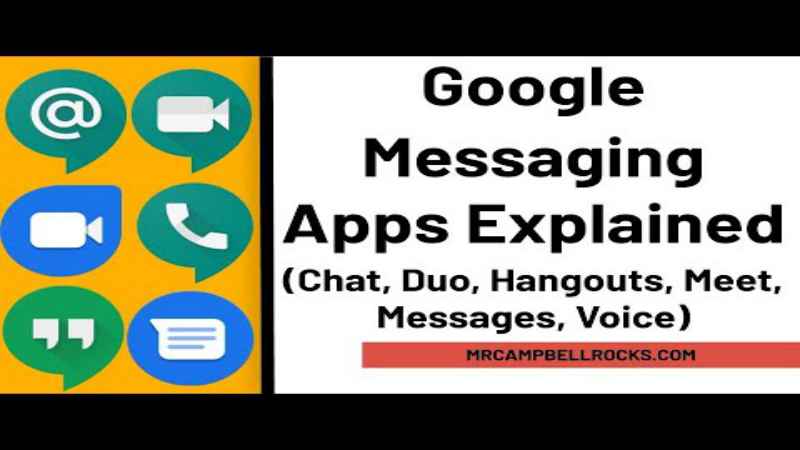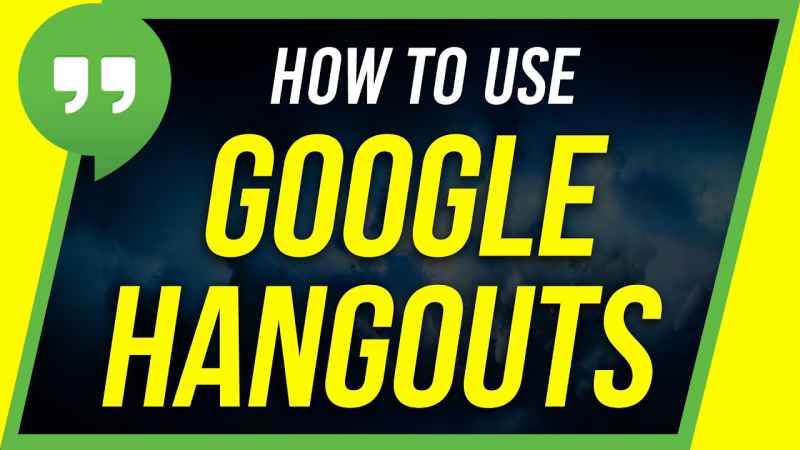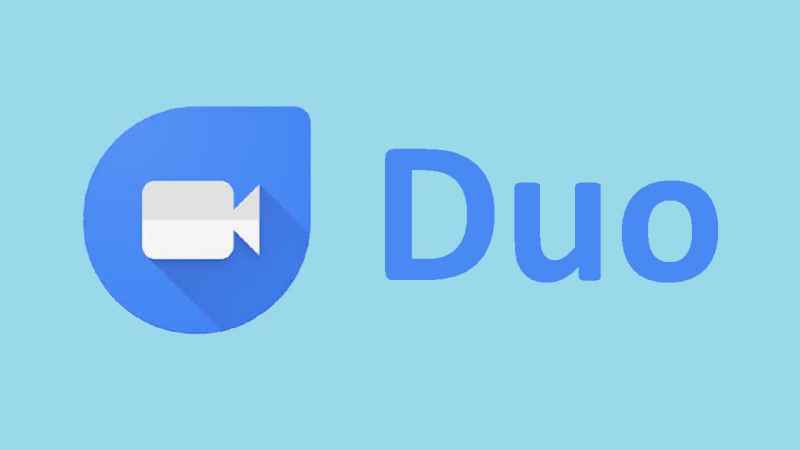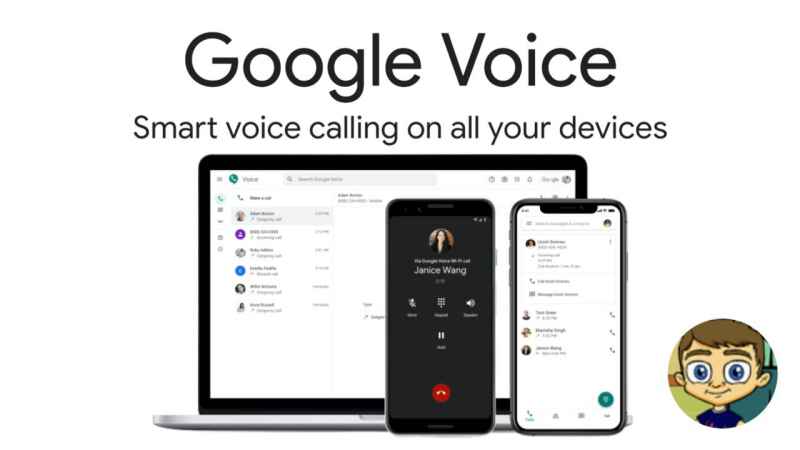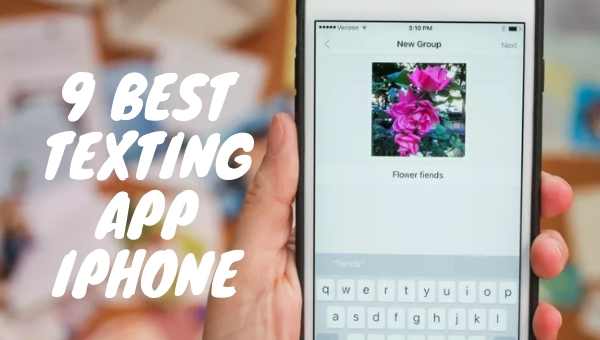we are going to guide you about the Best New Google Messaging App that Is Safe For Android/ iPhone/ Windows which is very helpful for you.
Contents
List of Top 7 Best New Google Messaging Apps:
Now, there are several apps on the Google Play Store that do message functions better than Google’s apps, which is crazed considering Google Talk and Gmail were the default messaging services for millions until Google killed off Talk.
The seven Google messaging apps here are what we have now.
Gmail:
Most everyone is knowledgeable of Gmail at this point. It’s a free, advertising-based service that enables you to send and receive emails.
You can utilize the Gmail app on your phone, the web gateway at mail.google.com, or you can unite your Gmail account with a third-party customer, like Microsoft Outlook or Blue Mail.
The web client supports flash messaging through a joined Hangouts (more on that later). Google Voice is also integrated within the Gmail web gateway. This makes the web portal a strong center for you to control multiple messaging practices, especially with the modern redesign.
However, the standalone Gmail mobile app only helps the email functions of Gmail.
Best use: Use the Gmail app for your email, particularly if you like having lots of authority over your workflow.
Inbox By Gmail:
Google offers an inbox by Gmail in 2014 as an alternative to the Gmail app. The layout and workflow of Inbox are more diverse than Gmail, with Google’s AI program taking more limitations over the foundation of your messages.
Unlike Gmail, you can’t produce a new account with Inbox; you practice a pre-existing email account within the Inbox client.
Some of the articles born in Inbox — like the smart reply features — have got their way to the original Gmail app. But some people favor Inbox over Gmail because of its purity and the fact that Google’s AI handles a lot of the legwork of having your Inbox clean and orderly.
Just similar to the Gmail mobile app, the Inbox mobile app only lets you do email. However, unlike the Gmail web gateway, the Inbox web portal also only enables you to do email, although your call logs and SMS messages from Google’s other assistance arrive in your Inbox folders.
In general, Inbox is just a different story from the Gmail interface, which makes one admire how long the app will last.
Best use: Practice the Inbox by Gmail app for your email if you’d rather not waste time to keep things organized for yourself.
Hangouts:
Okay, this is where things get complicated. Hangouts started as a feature in Google Plus that was rigidly for video chats. However, facing the game from the likes of Facebook Messenger, WhatsApp, and others, Google required a standalone service to grab some market share. So it ported out the Hangouts feature into its app.
Now, using Hangouts, you can immediately message people, conduct video chats, and place audio phone calls. However, you can’t send SMS or MMS messages, which limits Hangouts from being the all-encompassing messaging app from Google.
But Hangouts itself isn’t long for this world. Last year, Google published that it would split Hangouts into two different products: Hangouts Meet and Hangouts Chat. Hangouts Meet will include the video conference perspectives of Hangouts and Hangouts Chat will focus on the immediate messaging side.
Currently, the full-featured versions of both Hangouts Meet and Hangouts Chat are held for G Suite customers only. The vanilla Hangouts is still free on the Google Play Store, but who knows for how long.
Best use: Hangouts are honestly great at everything it does. However, as noted at the start of this article, Google doesn’t want a one-size-fits-all messaging app, so who understands how long we’ll have Hangouts.
Google Allo App
After Google opened up on Hangouts becoming a choice for WhatsApp users, it put out Google Allo, which is only about instant messaging. The big traffic point for Allo is the fact that it integrates Google Assistant features into your chats, providing you access to things like Smart Reply.
To use Allo, you have to attach it with your phone number, which limits you to using Allo only on your phone. There’s no tablet or desktop support for Allo, which is annoying.
However, even though you can send an instant message to people using Allo, you can’t use the app as an SMS or MMS client. That means that, even though you connected your phone number to the app, you still have to text somebody using one app and then IM them using Allo.
What’s super disturbing about this limitation is that Allo does give you the ability to send SMS texts. But the character who receives the message gets it from a mysterious, Google-owned proxy number, not your own.
Oh, and one last thing: Google is likely doing away with Allo by integrating RCS messaging into Android Messages through a new program called Google Chat (more on that later). There’s nothing solid as of yet, but we’ll likely see the end of Allo shortly.
Aside from these important caveats, Allo is a good Google Messaging App. What it does (instant messaging) does well, with a colorful and easy-to-use interface with a lot of cool features.
Best use: Use for instant messaging only, and only use it if you have to. Allo is not long for this world.
Google Duo App
Along with the split-of-second messaging from Hangouts into Google Allo, Google created Google Duo to handle video chats. Now it can also control audio calling. However, as usual, there are unusual limits.
Using Duo, you can not only arrange video calls to people using your Google account, but you can also call other mobile numbers. If the character you call has Duo installed on their phone, you can use video/audio chat with each other for free.
However, if you put a video call with an Android user who doesn’t have Duo installed, it defaults to a normal audio call. After the call, the user is inspired to install Duo.
If you video call a person who’s using a non-Android device like an iPhone, and they don’t have Duo installed, the call doesn’t go through at all, and you have to contact them through other means.
It’s also worth considering that it is possible — although tricky — to use Duo with your Google Voice number alternatively of your SIM number. However, it is considerably more comfortable to use your SIM number with the app.
If you’re trying to interact with someone who doesn’t have Duo, things get complicated, and it’s easier just to call them using your phone’s dialer or use a different shared app.
Android Messages App
Currently, Android Messages is the only app from Google that completely supports SMS and MMS texting utilizing your SIM card number. And wouldn’t you know it, that’s about all this app does.
If you are blessed enough to be a Project Fi subscriber, Android Messages supports RCS messaging, which makes texting more like instant messaging (à la iMessage) (Savvy readers pointed out that this is not only true.
Fi does support Smart Reply completely between Fi subscribers, which is an RCS-like feature. But full RCS implementation won’t happen for a while). However, if you’re not on Fi, only certain mobile carriers support RCS messaging for Android Messenger.
In the future, Android Messages will likely support RCS messaging for all, as well as the capability to text from your desktop using a web portal. These features are in improvement and live as a rumor only at this point.
(This has now rolled out as Android Messages for Web and RCS will appear in Messages under the Chat banner). When those features roll out, it will make Google Allo irrelevant. That’s why Google is moving the Allo team to work on Google Chat instead.
Best use: As of today, the only purpose of using Android Messages is to send SMS and MMS messages.
Google Voice App
Google Voice is one of the earlier applications on this list. Using Voice, you can sign up for a free phone number from Google and utilize it to make free phone calls and send free text messages.
If you download the Voice app from the Google Play Store, you can utilize that app to make phone calls, send SMS (including group MMS), and view and listen to voicemail.
In other words, if you needed to send a text from your Google Voice number and then send a text from your normal SIM number, you would want to do both tasks in two different apps. Same with phone calls and voicemails.
However, you can send your Google Voice calls and messages to your SIM number, which then gives you to manage everything from one app. However, that app won’t be Google Voice.
Best use: As it stands, Google Voice is excellent for people who use their Google Voice number as their first number. For everyone else, it’s easier to use your phone’s built-in dialer for calls and Android Messages for texts.
Chat App:
The upcoming Chat service won’t be a standalone app, but rather a behind-the-scenes system that is included in Android Messages. After years of trying, Google finally gave up on trying to create a messaging app for Android that could play with Apple’s iMessage.
Instead, it is getting mobile vehicles to change the way they host texting, and that new method is called Chat.
At its most basic level, Chat is just a code word for RCS messaging, which you can read more about here. The idea is that ships will “turn on” Chat support, and then Android users will be capable of talking using RCS messaging with other users who also have Chat support.
If each end of the conversation doesn’t support Chat, the fallback will be regular SMS and MMS.
Google knows that publishing yet different messaging apps would be futile, as it has previously shown that making a chat app work well is exceptionally hard for the company.
With Chat baked right into Android Messages, you can require Google to push Android Messages hard over the next several years.


